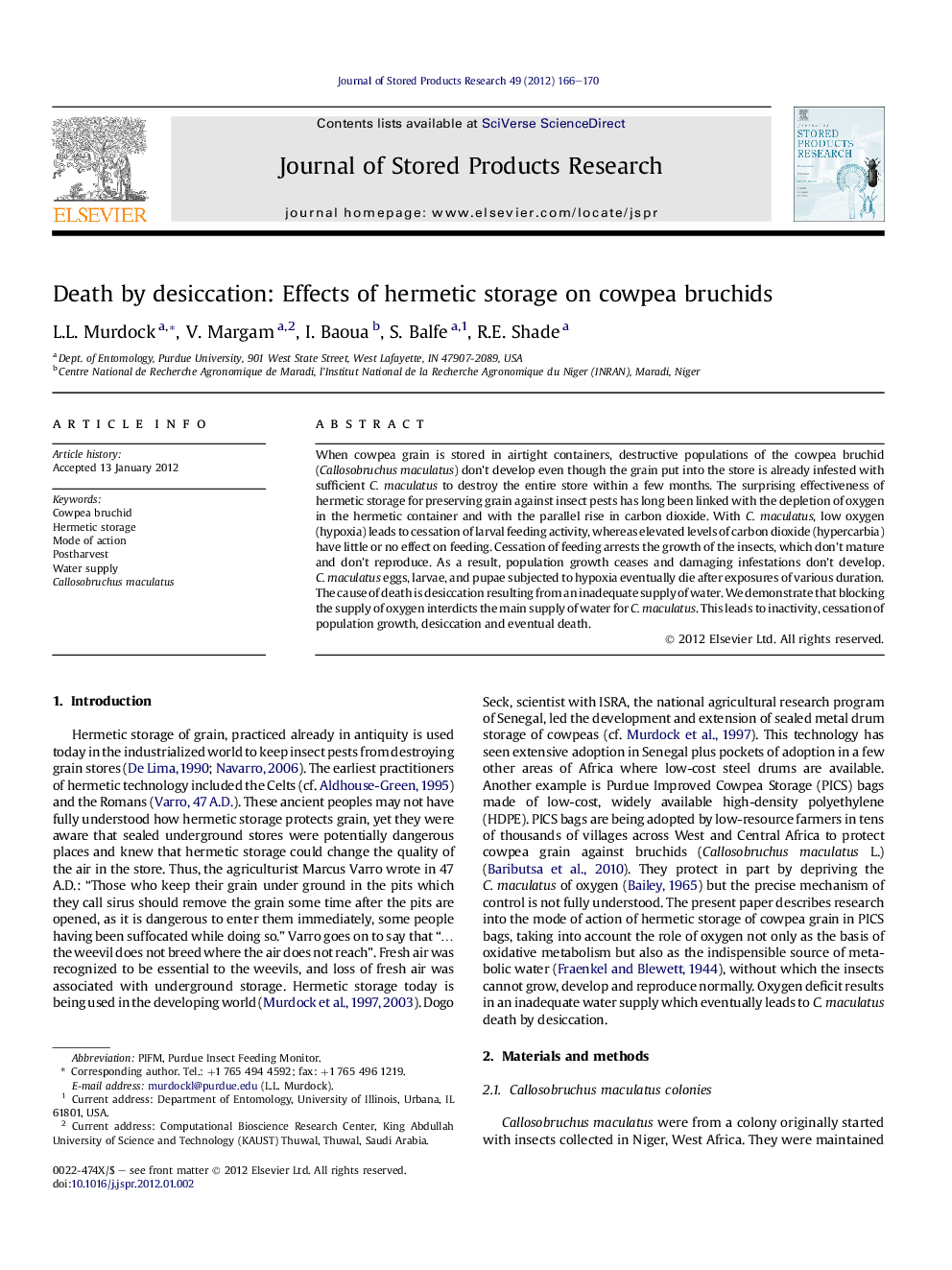| کد مقاله | کد نشریه | سال انتشار | مقاله انگلیسی | نسخه تمام متن |
|---|---|---|---|---|
| 4517190 | 1624939 | 2012 | 5 صفحه PDF | دانلود رایگان |

When cowpea grain is stored in airtight containers, destructive populations of the cowpea bruchid (Callosobruchus maculatus) don’t develop even though the grain put into the store is already infested with sufficient C. maculatus to destroy the entire store within a few months. The surprising effectiveness of hermetic storage for preserving grain against insect pests has long been linked with the depletion of oxygen in the hermetic container and with the parallel rise in carbon dioxide. With C. maculatus, low oxygen (hypoxia) leads to cessation of larval feeding activity, whereas elevated levels of carbon dioxide (hypercarbia) have little or no effect on feeding. Cessation of feeding arrests the growth of the insects, which don’t mature and don’t reproduce. As a result, population growth ceases and damaging infestations don’t develop. C. maculatus eggs, larvae, and pupae subjected to hypoxia eventually die after exposures of various duration. The cause of death is desiccation resulting from an inadequate supply of water. We demonstrate that blocking the supply of oxygen interdicts the main supply of water for C. maculatus. This leads to inactivity, cessation of population growth, desiccation and eventual death.
► Callosobruchus maculatus larval feeding rates fall as ambient O2 falls.
► Feeding ceases when O2 falls into the range 2–5% (v/v).
► Feeding rates are little affected by ambient CO2 levels up to 20 percent (v/v).
► C. maculatus depends heavily on ambient O2 for their water supply.
► Desiccation-caused death contributes to the effectiveness of hermetic storage.
Journal: Journal of Stored Products Research - Volume 49, April 2012, Pages 166–170